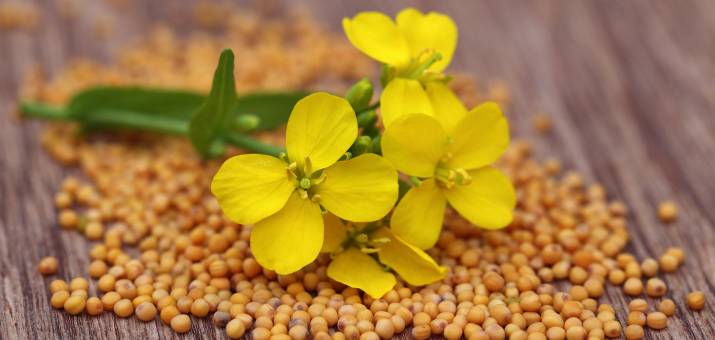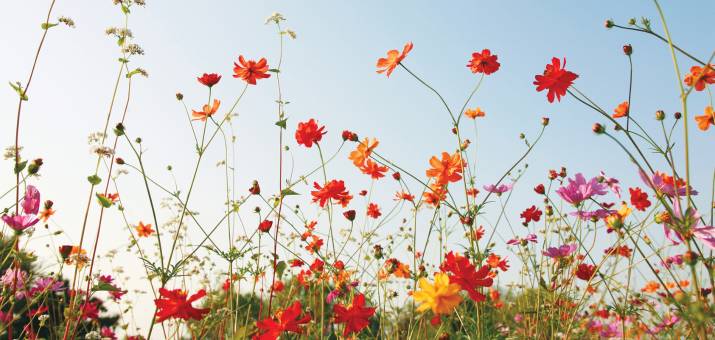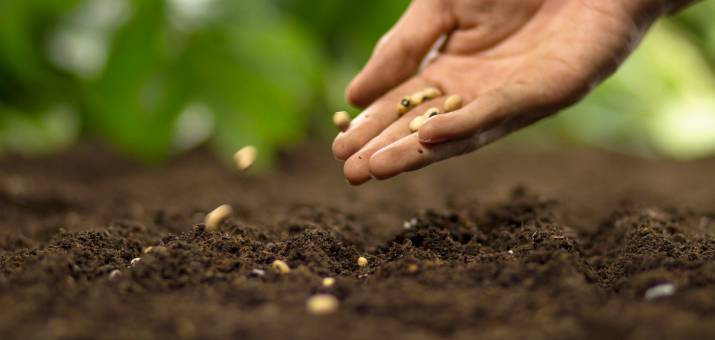
Beginner’s Guide: How To Plant Flower Seeds
Do you wish to fill your garden with vibrant colors but aren't sure how to get started with flower seeds? Planting flowers from seed can save you money and gives you more control over the variety of blooms in your garden.
This blog post will guide you through every step, from choosing and preparing the perfect flower seeds, planting them correctly, to caring for growing seedlings. Let's dive into the world of blooming beauties!
Key Takeaways
- Choose flower seeds that are suitable for your climate and growing season.
- Use containers or prepare a garden bed with high - quality soil for planting the seeds.
- Follow proper sowing techniques, including direct - sowing or starting indoors.
- Ensure you plant the seeds at the right depth and spacing, while providing adequate water and sunlight.
- Care for the growing seedlings by pruning, thinning out overcrowded plants, and protecting them from pests and disease.
Choosing the Right Flower Seeds

Consider climate and growing season. Choose seeds from reputable sources. Determine planting location and space availability.
Consider climate and growing season
Understanding your region's climate and growing season is crucial for choosing successful flower seeds. Different flowers thrive in diverse climates, some prefer cool weather while others need heat to grow well.
Check the plant hardiness zone information on seed packets to ensure compatibility with your local conditions. The length of the growing season also matters; long-season annuals may not reach maturity in areas with short summers.
Selecting seeds adapted to your specific climate and growing season will give you a more vibrant, healthy flower garden.
Choose seeds from reputable sources
Buying mature plants from garden centers is a common practice, but many gardeners discover the joy of starting flowers from seeds. It allows more room for variety and experimentation while saving money.
Always choose your flower seeds from reputable sources. Companies with a solid reputation often provide high-quality, fresh seed packets.
Quality seeds germinate better and ensure healthy young plants. Reputable providers offer a wide range of perennial flowers and annuals to suit different climates and garden requirements.
Avoid buying seed packets with no clear marking or information about the plant hardiness or required growing conditions. Understanding what you are planting can make all the difference in your cut flower garden.
Determine planting location and space availability
Understanding your garden's layout can greatly influence the success of your flowers. First, take note of the amount of sunlight different sections in your yard receive throughout the day.
Many flowers require full sun, while others thrive in partial shade. Next, determine how much space you have available for planting. Consider any existing plants, outdoor furniture or structures that may limit planting space or interfere with growth and sunlight intake.
Correct spacing between seeds will also help ensure that each plant has enough room to grow without competing for nutrients and water with nearby plants.
Types of Flower Seeds-Discover Our Diverse Selection of Premium Flower Seeds

Swell Seed Company is your go-to source for a wide variety of premium flower seeds. Our collection features an array of unique and vibrant options to elevate your garden and support local wildlife. Here are some of the exceptional types of flower seeds we offer:
Enhance your garden with these stunning options and support local ecosystems with Swell Seed Company's premium flower seeds.
Preparing for Planting

To prepare for planting, choose appropriate containers or a garden bed that will allow the flower seeds to grow and thrive. Use high-quality soil and add fertilizer if needed to provide essential nutrients for the growing seedlings.
Before planting, make sure to water the soil thoroughly to ensure it is moist and ready for the seeds.
Choose appropriate containers or garden bed
To plant your flower seeds successfully, it is important to choose the right containers or garden bed. Here are some tips on how to do it:
- Consider the size of the plant and its root system when selecting containers or determining the size of your garden bed.
- Ensure that containers have adequate drainage holes to prevent waterlogged soil.
- If using a garden bed, make sure it is well-prepared with loose, well-drained soil.
- Raised beds can be a good option as they provide excellent drainage and allow for better control over soil conditions.
- For small spaces or balconies, consider using hanging baskets or window boxes.
- Choose materials that are durable and able to withstand outdoor elements, such as plastic, terracotta pots, or wooden raised beds.
Use high-quality soil and add fertilizer if needed
To ensure successful growth, it is important to use high-quality soil for planting your flower seeds. This will provide the necessary nutrients and support for the seeds to germinate and develop into healthy plants. If needed, you can also add fertilizer to enrich the soil with essential nutrients that may be lacking. The combination of good soil and proper fertilization will give your flower seeds the best chance at thriving and producing beautiful blooms. Remember to choose a well-drained soil that retains moisture but does not become soggy, as excessive water can lead to root rot. Additionally, consider the specific fertilization requirements of the flower seeds you are planting, as different flowers may have different needs when it comes to nutrients.
Water the soil before planting
To ensure successful growth, it's important to water the soil before planting your flower seeds. This helps create a moist environment that promotes germination and root development.
By thoroughly watering the soil, you provide essential hydration for the seeds to absorb and initiate their growth process. Remember to use a gentle stream of water or a misting spray so as not to disturb or displace the seeds.
Soaking the soil will also make it easier for roots to penetrate and establish themselves as the plants begin to grow.
Planting Flower Seeds
Plant flower seeds using different methods like direct-sowing or starting indoors. Learn about proper depth, spacing, watering, and light requirements for successful seed planting.
Read more to master the art of planting flower seeds!
Sowing methods (direct-sowing and starting indoors)
To plant flower seeds, there are two main methods you can use: direct-sowing and starting indoors. Here's how to do each one:
- Direct-sowing:
- Choose a sunny area in your garden bed or outdoor space for planting the seeds.
- Prepare the soil by removing any weeds or debris, and loosen it with a garden fork or rake.
- Follow the seed packet instructions for the appropriate depth and spacing of the seeds.
- Place the seeds into the soil at their recommended depth, making sure to give them enough space to grow.
- Cover the seeds lightly with soil, using a light layer to ensure they receive enough sunlight for germination.
- Water the soil gently so that it is evenly moist, but not soaking wet.
- Continue to water regularly as needed to keep the soil moist until the seeds germinate.
- Starting indoors:
- Fill seed trays or pots with a well - drained potting mix, leaving about half an inch of space at the top for watering.
- Moisten the potting mix before planting by misting it with water until it is evenly damp.
- Sow one or two seeds per cell or pot according to packet instructions and cover them with a thin layer of potting mix.
- Place trays or pots in a bright location where they can receive indirect sunlight or use grow lights if necessary.
- Keep the temperature around 70-75°F (21-24°C) during germination by using a heat mat if needed.
- Water the seeds regularly by misting them with water whenever the top inch of potting mix feels dry.
- Once seedlings have developed their second set of leaves, you can transplant them into larger containers or into your garden bed.
Proper depth and spacing
Planting flower seeds at the right depth and spacing is crucial for their successful growth. Follow these guidelines to ensure your seeds have the best chance of germinating and thriving:
- Dig a small hole or trench in the soil, making sure it is deep enough to cover the seeds. The general rule of thumb is to plant seeds at a depth that is two to three times their size.
- Space out the seeds according to the recommended spacing on the seed packet. This will vary depending on the type of flower you are planting.
- Gently cover the seeds with soil, pressing it down lightly to ensure good contact.
- Water the newly planted seeds thoroughly, being careful not to wash them away.
- If starting indoors, place each seed in its own individual container, ensuring they are spaced apart adequately.
Watering and light requirements
To ensure the successful growth of your flower seeds, it's important to meet their watering and light requirements. Watering is crucial for seed germination and plant development. Keep the soil evenly moist, but avoid soaking it wet as this can cause rot.
Provide adequate light by placing your seeded containers or garden beds in a sunny area where they can receive full sun for at least 6 hours a day. If you're starting seeds indoors, consider using grow lights to provide enough light for the young plants to thrive.
Caring for Growing Seedlings
Water the seedlings regularly and ensure they receive adequate sunlight to promote healthy growth. Prune and thin out the seedlings if necessary to prevent overcrowding, and take steps to protect them from pests and disease.
Provide adequate sunlight and water
To ensure healthy growth, it's important to provide your flower seedlings with the right amount of sunlight and water. Here's what you need to do:
- Place your seedlings in a sunny area that receives at least 6 - 8 hours of direct sunlight per day.
- Water the seedlings regularly, keeping the soil evenly moist but not soaking wet.
- Avoid overwatering, as this can lead to root rot and other issues. Check the moisture level by sticking your finger into the soil - if it feels dry up to your first knuckle, it's time to water.
- Use a watering can or a gentle spray nozzle on a hose to water the seedlings, aiming directly at the soil and avoiding getting water on the leaves.
- If you notice any wilting or drooping leaves, increase the amount of water you're giving to your seedlings.
- Keep an eye on weather conditions - during hot and dry periods, your seedlings may need extra watering.
Prune and thin out seedlings if necessary
To ensure healthy growth, it may be necessary to prune and thin out seedlings. Here are some tips for doing so:
- Trim back any overcrowded or weak seedlings using clean garden shears.
- Cut the stem just above a leaf node, which is where a new branch or leaf will grow.
- Remove any seedlings that are not thriving or seem diseased to prevent the spread of pests or disease.
- Be careful not to damage the roots of nearby seedlings when pruning.
- Regularly monitor your seedlings and continue to prune as needed throughout their growth.
Protect from pests and disease
To ensure the health and vitality of your growing seedlings, it's important to protect them from pests and disease. Here are some steps you can take to safeguard your plants:
- Regularly inspect your plants for any signs of pests or disease, such as discoloration, wilting, or unusual growth.
- Use organic pest control methods whenever possible, like handpicking insects off the plants or using insecticidal soap.
- Encourage beneficial insects in your garden that prey on pests, such as ladybugs and praying mantises.
- If necessary, use natural pesticides sparingly and always follow the instructions on the label.
- Keep your garden clean and tidy by removing any dead or decaying plant material that could attract pests or harbor diseases.
- Water your plants at their base rather than overhead to minimize the spread of diseases.
Conclusion
Now that you have the knowledge on how to plant flower seeds, you can create a beautiful and vibrant garden. Choose the right seeds, prepare the soil, and sow them with care. Don't forget to provide proper sunlight and water as your seedlings grow.
Soon enough, you'll be rewarded with blooming flowers that will brighten up your space. Happy gardening!
FAQs
1. How do I start the process of planting flower seeds?
The seed starting process involves planting individual seeds in well-drained soil, keeping the seeds moist and ensuring they get enough sunlight to germinate.
2. What types of flowers can be sown directly into the garden?
Hardy annuals like sweet peas, forget-me-nots, and morning glories are all suitable for direct sowing in a cutting garden come early spring.
3. Should perennial seeds be started indoors or can I plant them directly outside?
It's often best to start perennial seeds indoors as it allows more growth before transplanting them outside.
4. Can I use egg carton or peat pots for germinating seeds?
Yes! Both an egg carton or peat pots filled with peat moss are excellent choices for starting your flower heads off as these encourage seedlings to grow by providing a good environment for the germination process.
5.What care should I take once my flower seeds have been planted?
Make sure you keep your planted flowers' well-drained soil moist without overwatering them and provide adequate sunlight exposure until you see notable growth from your seed starts.
6.Do more Seeds guarantee higher chances of successful planting?
Not all seeds will germinate--to increase probability, plant more than one seed per hole while following proper seedling care such as sufficient watering and exposing plants to adequate light.
Products
View all

